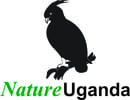Assessing Biodiversity in Lubigi Wetland: Insights and Challenges

Lubigi Wetland serves as a crucial buffer for the Kampala and Wakiso areas, absorbing floodwaters from neighbouring drainage systems. However, its proximity to urban areas renders it susceptible to the degradation and loss of biodiversity, spurred by activities like settlement, farming, and infrastructure development. NatureUganda, supported by the French Development Agency through the SURE-WET project, undertook a comprehensive baseline biodiversity assessment from April 3rd to 13th, 2024. This assessment, facilitated by NatureUganda’s specialist working groups, focused on evaluating five key biodiversity components: birds, plants, insects, herps, and mammals, considering their richness, abundance, and distribution within the wetland.

NU Research team conducting biodiversity assessments in Lubigi Wetland together with environmental police
Lubigi Wetland comprises a diverse ecosystem, exhibiting distinct features as one explores deeper into its expanse. While some areas have have been converted into gardens and settlements, others remain vegetated, owing to the restoration efforts spearheaded by NEMA and the Wetland Management Department. The specialists sampled these varied clusters to conduct the assessment.
Initial findings from the BirdLife working group indicate that the wetland continues to harbor a high diversity of bird species, including several under threat. Notably, it serves as a crucial foraging ground for Grey crowned Cranes in Kampala and stands as one of the few habitats where the papyrus Gonolek can be spotted in the central region. Certain pockets within Lubigi provide sanctuary for rare papyrus endemic species such as the Blue-Headed Coucal, Carruthers Cisticola, and swamp warblers. Additionally, the wetland remains a vital habitat for large waterbirds like the Great Egret and Grey Heron.
However, our observations during the baseline biodiversity assessments highlighted the various threats facing Lubigi Wetland. These include the construction of the Northern Bypass Highway, which encroaches upon approximately half of the wetland’s area, the high-tension electric cables traversing the wetland from Kawanda to Mutundwe substation, and the National Water and Sewerage Corporation sewage treatment plant established within the wetland. Human encroachment further worsens the situation, as houses and plantations are set up in the wetland. Some households have even resettled in sections that were restored and this endangers the integrity of the remaining wetland, necessitating urgent mitigation measures.
Lubigi Wetland’s strategic urban location, coupled with its rich biodiversity, presents promising ecotourism prospects. To harness these opportunities, it is imperative to explore sustainable ecotourism development initiatives that not only generate revenue for the community but also foster awareness about biodiversity conservation. Establishing nature trails, birdwatching sites, and other ecotourism attractions within or adjacent to Lubigi Wetland emerges as potential solutions to leverage its ecological wealth for the benefit of both conservation and community.
Related Posts
Recent Posts
NatureUganda hosts nature walk to promote conservation and tourism in Bugoma CFR
Site Profiling of Mabamba Bay and Musambwa Islands: Opportunities for Biodiversity Conservation and Climate Resilience
Greater Painted-snipe – When Females Take the Lead
All Categories
- Conservation and Development (35)
- Eco-tourism (6)
- Education and Awareness (14)
- Forests (12)
- Gorvenance (1)
- Habitats (13)
- membership (2)
- Nature walk (3)
- People (10)
- Projects (13)
- Public dialogue (9)
- Research and Monitoring (22)
- Sites (6)
- Species (13)
- Wetlands (15)
- Wildlife (10)




